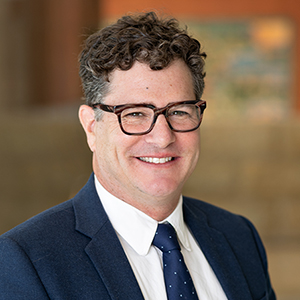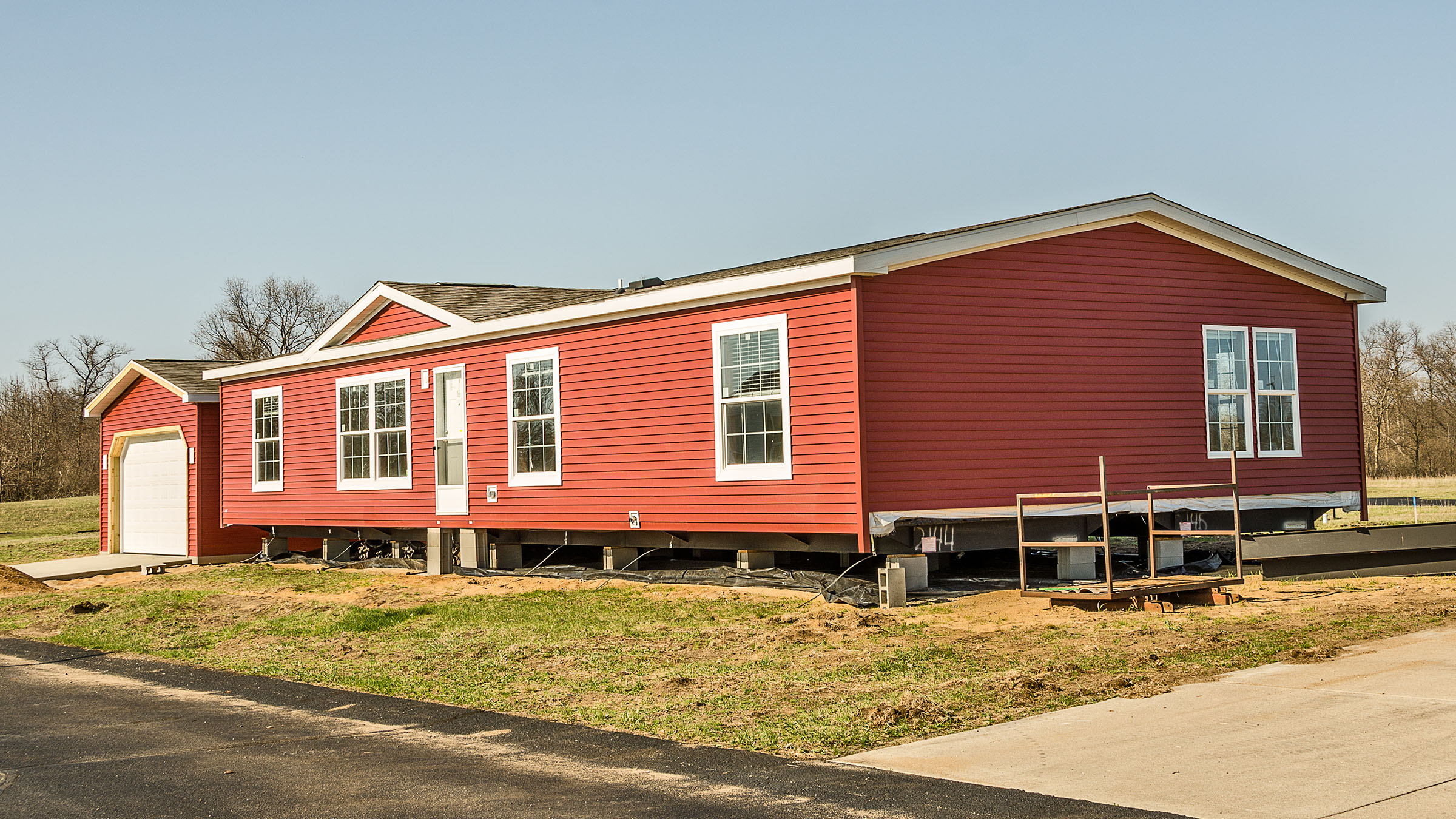In 2018, the United States Department of Agriculture (USDA) launched a partnership with Native Community Development Financial Institutions (CDFIs) to increase Native home buyers’ use of one of its cornerstone loan products: the affordable, long-term USDA 502 Direct Loan.1 Under this new partnership, called the Native CDFI Relending Demonstration Program, participating Native CDFIs borrow funds from the USDA and use them to originate 502 direct mortgage loans to Native borrowers.
The program provides Native CDFIs with long-term capital—a resource that’s typically challenging for them to access—and leverages their deep ties to tribal communities. It’s a departure from the standard 502 direct loan model, where applicants work directly with the USDA or a USDA-certified intermediary and the federal government originates the loan.
Building on our body of research into homeownership in tribal communities, which includes studies that identified large interest rate disparities that translated to higher mortgage costs for Native borrowers, the Center for Indian Country Development (CICD) recently explored whether the Native CDFI Relending Demonstration Program is having its intended effect of expanding affordable homeownership. Our analysis, based on “before” data from the South Dakota Native Homeownership Coalition and “after” data from two South Dakota-based Native CDFIs, yielded two key findings.2 First, through this relending model, the reservation communities Native CDFIs serve have seen an unprecedented pace of 502 direct loan originations, suggesting that those borrowers might otherwise have struggled to access affordable mortgage financing without the relending program. Second, the relending model has helped strengthen the institutional capacity of participating Native CDFIs, enabling them to expand housing as a core line of business and serve more families across their communities.
This article explores what we’ve found about this relending program’s real and potential effects on Native CDFIs, their clients, and the USDA’s mission to increase access to affordable housing in rural communities. Learning more about initiatives like this is part of CICD’s mission to advance the economic self-determination and prosperity of Native nations and Indigenous communities through actionable data and research.
Challenges in 502 direct lending in Indian Country prompt new approach
Launched in 1949, the 502 direct loan program aims to improve rural housing and expand homeownership opportunities for underserved populations. The program offers fixed-rate mortgages with terms of 30 to 38 years, no down payment, and interest rates as low as 1 percent. Applicants must meet income- and geographic-eligibility criteria, lack adequate housing, and be unable to obtain an affordable mortgage elsewhere.
Traditionally, 502 direct loan applicants work directly with the USDA or through USDA-certified loan packagers—intermediaries that assist with the application process. While there are over 1,200 certified packagers nationwide, prior to the Native CDFI Relending Demonstration Program, only one certified packager was a Native CDFI. In other words, just a fraction of a percent of all 502 direct loan intermediaries specialized in lending to Native borrowers and reservation communities.
A number of factors help explain this gap. Chiefly, lending on the federal trust land that makes up many reservations involves complex legal and administrative processes that require specialized knowledge, which can deter many packagers. And the limited housing stock on reservations results in low application volume, making it financially unsustainable for packagers to operate solely through packaging fees.
For 502 direct loan applicants, and particularly for applicants working directly with USDA offices, geographic isolation stemming from the remoteness of many reservations can pose a significant barrier. Many potential borrowers must travel long distances to meet with USDA staff or must complete the process by mail.
The challenges have contributed to the program’s underutilization in Indian Country: in 2019—after the Native CDFI Relending Demonstration Program began but before loan activity ramped up—just six out of roughly 6,200 502 direct loans, or only 0.1 percent, were made to Native homeowners living on reservations.
The USDA launched the demonstration program to address these challenges. This new initiative, modeled after the USDA’s Intermediary Relending Program,3 provides low-interest, long-term loans to Native CDFIs, enabling them to originate and service 502 direct loans for eligible home buyers. The program was initially piloted with two Native CDFIs in South Dakota: Four Bands Community Fund (Four Bands) and Mazaska Owecaso Otipi Financial (Mazaska). Each received $1 million in 502 direct loan authority, backed by $800,000 in USDA funds, loaned at 1 percent interest over 33 years with a three-year grace period; and $200,000, or 20 percent, in matching funds that the Native CDFIs were required to provide.
In 2022, Four Bands and Mazaska received $3 million and $1 million loans, respectively, from the USDA to increase their originations of 502 direct loans. In 2023, loans worth a total of $9 million were distributed to nine Native CDFIs, and in 2024, loans totaling $5.5 million were distributed to six Native CDFIs. From 2022 through 2024, 11 unique Native CDFIs4 received 17 USDA loans totaling $18.5 million, which have helped approximately 150 families and individuals purchase new homes.5 The only substantive change from the initial demonstration program to its current form is that Native CDFIs that are capital-constrained—effectively, most Native CDFIs—have the option to waive the 20 percent matching requirement.
502 direct lending takes off in Indian Country—and spells long-term homeownership for borrowers
To illustrate the effects of the change in the delivery of 502 direct loans, we focused on the two pilot Native CDFIs, Four Bands and Mazaska, and the two reservations they serve: the Cheyenne River Reservation and the Pine Ridge Reservation, respectively. Some Native CDFIs in the demonstration program, especially those that received allocations in 2024, have yet to close on their USDA loans. For that reason, we focused on the distribution of 502 direct loans in the service areas of the two pilot Native CDFIs, which were granted allocations in 2018 and closed their loans with the USDA in 2019.
As shown in Figure 1, from 2009 to 2017, only seven 502 direct loans were originated on the Cheyenne River and Pine Ridge reservations. The first 502 direct loans created from the Native CDFI relending pilot were closed in the last quarter of 2019. From 2019 to the end of 2024, both Four Bands and Mazaska used USDA relending capital to originate and service 35 502 direct loans, which translates into a 400 percent increase in 502 direct loan volume on these reservations and an increase of over 500 percent in the amount loaned. While these loans were not required to be exclusively on trust land, 30 of them (86 percent) were originated on trust land.
Sources: “Before launch of relending pilot” data are from the South Dakota Native Homeownership Coalition. “After launch of relending pilot” data are from Four Bands Community Fund and Mazaska Owecaso Otipi Financial.
According to publicly available data from the Home Mortgage Disclosure Act (HMDA), a federal law that requires most banks, credit unions, and mortgage companies to report data on their mortgage loan terms and borrower characteristics, the most common loan type that HMDA-reporting financial institutions issued to Native American borrowers living in rural Indian Country from 2019 through 2021 was a manufactured home loan. Among these, the most common was a home-only loan—in other words, financing not secured by land. These loans typically have a term of just 23 years, substantially shorter than the 30-year term of a typical conventional mortgage, and they were issued at an average interest rate of 8.3 percent among Native American borrowers in 2019–2021.
In contrast, the 502 direct loans originated through the Native CDFI relending program, which follow guidelines established by the USDA, offer borrowers a longer time horizon of homeownership. The 35 loans made by the two pilot Native CDFIs most commonly had a term length of 33 years, 10 percent longer than that of a typical conventional mortgage. The extended term is designed to lower monthly payments and improve affordability. The loans carried an average interest rate of 3.5 percent, consistent with USDA rates at the time of origination.
If a borrower took out a $150,000 home-only loan to purchase a manufactured home, they would pay approximately $83,000 more in interest over the life of the loan than they would with a $150,000 502 direct loan from the Native CDFI relending program.6
Participating Native CDFIs are building institutional capacity
Native CDFIs face persistent challenges accessing long-term capital—a key constraint in offering mortgage products. Unlike depository institutions, most Native CDFIs cannot rely on deposits to fund loans. Instead, they depend on external funders such as banks and the U.S. Department of the Treasury’s CDFI Fund. As noted in a 2020 report from Oweesta, an organization that provides financial products and services to Native CDFIs and Native communities, “[t]o date, few funders have been willing to extend loan capital terms beyond 3-5 years.” This makes it difficult for Native CDFIs to offer long-term mortgages, pushing many to focus instead on shorter-term consumer and small business lending. As a result, only a subset of Native CDFIs have been able to add housing lending to their portfolios.
The USDA’s Native CDFI relending program directly addresses this capital gap. It enables Native CDFIs to act as intermediaries that originate and service 502 direct loans within their own communities using long-term, low-cost capital. Both Four Bands and Mazaska have reloaned USDA funds, with Four Bands entering the housing lending space for the first time.
Native CDFI relending is creating a ripple effect in Native communities by expanding both financial and housing opportunities. Each 502 direct loan generates loan-closing fees and interest income, which create a new revenue stream for Native CDFIs. This added income allows them to continue making home loans even after their primary loan capital is depleted, which extends the reach and impact of their housing programs.
Beyond financial sustainability, the experience gained through the Native CDFI relending program is helping Native CDFIs broaden and refine their housing finance capabilities. For example, Four Bands completed USDA’s 502 direct loan packaging training, which in turn improved how it structures and issues the home loans that it originates and does not sell on the secondary market. Other Native CDFIs have become certified to offer USDA 502 Guaranteed Loans or U.S. Department of Housing and Urban Development Section 184 loans—products offered by other federal programs tailored to Native borrowers. Several Native CDFIs are expanding client access to conventional mortgage products by pursuing partnerships as brokers or correspondent lenders with financial institutions that are Fannie Mae- or Freddie Mac-approved lenders. Though conventional loans typically involve more extensive underwriting and require private mortgage insurance for higher loan-to-value ratios, they offer a critical source of long-term housing capital.
Finally, the capacity built through Native relending positions these CDFIs to play a central role in a newly authorized relending program that’s designed to extend the reach of the U.S. Department of Veterans Affairs Native American Direct Loan (NADL) program. The NADL program provides low-cost loans for Native veterans or their spouses to buy, build, or improve homes on federal trust land. The program originally applied only to homes on federal trust land, but like the newly authorized relending program, it now applies to homes either on or off trust land.
Ultimately, Native CDFIs—when equipped with long-term capital—have shown that they can drive homeownership and economic development within tribal communities more effectively than the federal government has historically been able to do. As they continue to build their capital base, these institutions will play a vital role in addressing housing and economic needs in Native communities for years to come.
We thank April Anderson, Tedd Buelow, Joanna Donohoe, Andria Hively, Stephanie Provost, Kristen Stambach, and Lakota Vogel for their contributions and feedback on this article.
Endnotes
1 Later, in 1991, the USDA created the Section 502 Guaranteed Loan Program, which enables lenders to issue loans that are backed in large part by a USDA guarantee if the borrower defaults.
2 The before data appear in An Update on the USDA Section 502 Home Loan Relending Pilot, a presentation by the South Dakota Native Homeownership Coalition at the December 9, 2019, National American Indian Housing Council Legal Symposium. The after data come directly from the two Native CDFIs, Four Bands Community Fund and Mazaska Owecaso Otipi Financial.
3 Like other federal agencies, the USDA has demonstration authority, which allows the agency to create temporary, innovative approaches without Congressional approval. The USDA created the Native CDFI Relending Demonstration Program to address specific challenges—in this case, improving homeownership opportunities for tribal communities in rural areas.
4 The following Native CDFIs received lending capital through the Native CDFI Relending Demonstration Program: Cherokee Nation Economic Development Trust Authority, Inc.; Four Bands; Haa Yaakawu Financial Corporation; Hawaii Community Lending; Lake Superior Community Development Corporation; Mazaska; NACDC Financial Services, Inc.; Native Community Capital; Nixwyaawii Community Financial Services; White Earth Investment Initiative; and Wisconsin Native Loan Fund.
5 From meeting notes of NeighborWorks America’s Lending Systems Working Group on November 14, 2024.
6 The two pilot Native CDFIs offer home loans from their own portfolios, so we are not suggesting that Native CDFIs would have to rely solely on the Native CDFI relending program. However, without a long-term loan from the USDA, it would have been difficult for the pilot CDFIs to offer long-term, low-interest loans. To highlight this, we compared the total interest payments on the 502 direct loans made by the pilot CDFIs (based on their average terms) with those on the loans most commonly available to Native borrowers in rural Indian Country from alternative lenders—such as banks, credit unions, and mortgage companies—which typically have shorter terms and higher interest rates.
Matthew Gregg is a senior economist in Community Development and Engagement, where he focuses on research for the Center for Indian Country Development. He has published work on historical development in Indian Country, Indian removal, land rights, and agricultural productivity.







